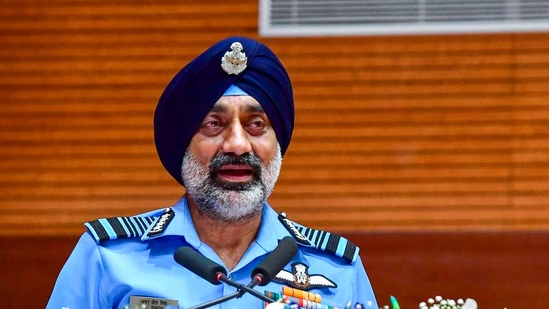
Operation Sindoor
At the L.M. Katre Memorial Lecture in Bengaluru on August 9, 2025, Air Chief Marshal Amar Preet Singh delivered a revelation that added both drama and restraint to the saga of Operation Sindoor: “Aur maarna tha, but…”—a phrase that captures strategic caution amid the lethal precision of war.
When Strategic Restraint Became the Harder Decision
Operation Sindoor, launched in early May 2025, marked India’s sharpest aerial response to the Pahalgam terror attack of April 22. The IAF struck nine terror infrastructure sites deep into Pakistan and Pakistan-administered Kashmir—the most extensive strike since 1971.
Yet, as Singh’s evocative words suggest, the force tempered its offensive when it had even more capacity to strike. Why?
At the lecture, he explained that strategic and tactical judgments, plus escalation concerns, guided the decision to halt further strikes.This sentiment—“we wanted to strike more, but…”—underscores the operational maturity of the Indian Air Force.
A Record-Breaking Aerial Campaign
Operation Sindoor showcased the largest-ever recorded surface-to-air kill, with the IAF downing five Pakistani fighter jets and an airborne surveillance (AEW&C) aircraft.
A strategic highlight: one plane was eliminated from a staggering 300 km away—a feat that sets a new high for long-distance aerial kills.
Beyond live kills, the IAF conducted precision strikes using the advanced S-400 air defense system, jamming and bypassing Pakistan’s Chinese-supplied air defenses in just 23 minutes. The operation degraded radar coverage and crippled strategic airbases—delivering what Indian sources describe as a five-year setback to Pakistan’s air capabilities.
Why the Halt Was as Meaningful as the Strike
“Aur maarna tha, but…” captures more than a tactical pause—it reflects a deliberate choice to avoid unnecessary escalation. Operation Sindoor was swift, precise, and strategically contained.
The IAF Chief credited political will, clear directives, and operational autonomy as the pillars behind the mission’s success. When objectives were met, India chose to stand down, avoiding a slide into an unbounded military spiral.
What’s more, this healthy restraint drew from lessons of the 2019 Balakot strikes, where public and strategic narratives grew contentious. Learning from that, the IAF ensured that Sindoor achieved its goals while preserving strategic depth and discretion.
A National and Strategic Triumph
The IAF Chief celebrated Operation Sindoor as a national victory, emphasizing flawless inter-service coordination, professionalism, and a higher strategic cause. He poignantly stated, “we were taking the path of truth… God was with us.”
Meanwhile, Chief of Defence Staff Gen. Anil Chauhan underlined how shifts in tactics after initial losses helped India reclaim the initiative, with the IAF executing deep precision strikes across multiple days.
The broader toll is more than tactical. According to the CDS, long-range precision strikes had a psychological impact, contributing substantially to Pakistan’s decision to seek a ceasefire.
Final Roar: Victory with Restraint
In the end, the phrase “Aur maarna tha, but…” perfectly encapsulates Operation Sindoor’s dual nature: powerful enough to shatter defenses, and mature enough to stop when the mission was fulfilled. It was not only a display of India’s advancing military technology and prowess; it was a demonstration of strategic wisdom.
The IAF proved that in modern warfare, true success lies not just in hitting targets—but knowing when to stop.
Thanks For Reading